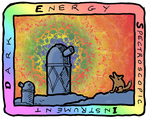Changes between Version 176 and Version 177 of PublicPages/MayallZbandLegacy/NotesforObservers
- Timestamp:
- Jan 30, 2017 4:49:46 PM (9 years ago)
Legend:
- Unmodified
- Added
- Removed
- Modified
-
PublicPages/MayallZbandLegacy/NotesforObservers
v176 v177 98 98 The tiles are broken into three passes. Each pass, pass1, pass2, and pass3, covers the basic footprint and each is offset optimally from the others. The tile are thus now fixed or defined on the sky for the duration of the survey. By definition: 99 99 100 **pass1** is the high quality, photometric coverage. To the greatest extent possible, we want to ensure pass one tiles are the best. As such, pass1 should be executed on photometric nights with good seeing (< 1.3"). The observer should not start pass1 if its a not a true photometric night or if 3-4 hour contiguous blocks are not stable and clear. The robot observing program will choose pass1 for seeing < 1.25", transparency > 90% and sky brightness not worse than 0.25 mag brighter than the fiducial. But the observer should really be setting pass1 based on whether its a very stable photometric night from beginning to end. Forcing the pass is described here: [wiki: MosBot].100 **pass1** is the high quality, photometric coverage. To the greatest extent possible, we want to ensure pass one tiles are the best. As such, pass1 should be executed on photometric nights with good seeing (< 1.3"). The observer should not start pass1 if its a not a true photometric night or if 3-4 hour contiguous blocks are not stable and clear. The robot observing program will choose pass1 for seeing < 1.25", transparency > 90% and sky brightness not worse than 0.25 mag brighter than the fiducial. But the observer should really be setting pass1 based on whether its a very stable photometric night from beginning to end. Forcing the pass is described here: https://desi.lbl.gov/trac/wiki/PublicPages/MayallZbandLegacy/NotesforObservers/MosBot. 101 101 102 102 **pass2** is the next best pass. Seeing should be < 1.3" or the weather is photometric (but seeing worse than 1.3"). Pass2 and 3 may alternate throughout a given night and the mosbot observing robot will do this automatically based on seeing, transparency, and sky brightness. Pass2 could also be done if no pass1 tiles are available. The robot will stick with pass2 when conditions are a little worse than this. Specifically seeing < 2" and trans > 70%. Observers can force pass3 if they think the conditions are poor, even though the robot might say pass2. This is especially encouraged if conditions are variable on short timescales and the robot is moving frequently between pass2 and pass3.
